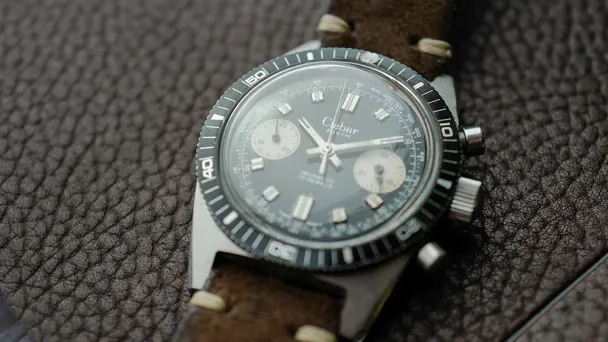Watches are more than mere timekeepers; they are intricate devices that can perform a variety of functions. One of the most popular and versatile complications is the chronograph. Whether you’re an aficionado or just beginning your horological journey, understanding the chronograph is essential. In this quick guide, we’ll unravel the mysteries of this captivating feature that graces the dials of many timepieces.
1. What Is a Chronograph?
At its core, a chronograph is a timekeeping instrument with an added stopwatch function. It allows you to measure elapsed time with precision, making it a valuable tool for a range of activities, from sports to aviation.
2. Anatomy of a Chronograph
A typical chronograph watch comprises three primary subdials, or registers, on the watch face. The main seconds hand, which is often located at the center, measures regular time. The two smaller subdials are used to track elapsed minutes and hours. To activate the chronograph, most watches feature pushers—buttons typically found on the side of the case.

3. How to Use a Chronograph
Using a chronograph may seem daunting at first, but it’s surprisingly simple:
- Start: To begin timing, press the top pusher. The main seconds hand will start moving.
- Stop: To stop timing, press the top pusher again.
- Reset: To reset the chronograph hands to zero, press the bottom pusher.
4. Tachymeter and Telemeter Scales
Some chronograph watches include additional scales on the bezel or dial. A tachymeter scale helps measure speed, while a telemeter scale can determine the distance of an event, like a lightning strike. These scales add functionality and flair to the watch.
5. Chronograph Variations
Chronographs come in various styles, including:
- Monopusher: These chronographs have only one pusher to start, stop, and reset the stopwatch function.
- Flyback: Flyback chronographs allow you to reset and restart the stopwatch with a single push of the reset button.
- Column-Wheel vs. Cam-Actuated: High-end chronographs often feature a column-wheel mechanism for smoother operation, while more affordable options may use a cam system.
6. Iconic Chronographs
The world of chronographs is rich with history and iconic models. Some of the most renowned chronograph watches include the Rolex Daytona, Omega Speedmaster, and TAG Heuer Monaco, each with its own unique story and design.

7. Maintenance
Regular maintenance is crucial to keep your chronograph functioning accurately. It’s recommended to have your watch serviced by a professional watchmaker every three to five years.
8. The Chronograph’s Legacy
The chronograph has a storied history, from its invention in the early 19th century to its role in various fields, including motorsports, aviation, and space exploration. Today, it continues to be a symbol of precision and style.
In Conclusion
The chronograph is not just a tool for measuring time; it’s a testament to human ingenuity and a beloved feature in the world of horology. Whether you use it to time laps on the racetrack or simply appreciate its intricate mechanics, the chronograph is a timeless companion that adds a touch of sophistication to any wrist. So, embrace this captivating complication and make the most of its precision and functionality.
